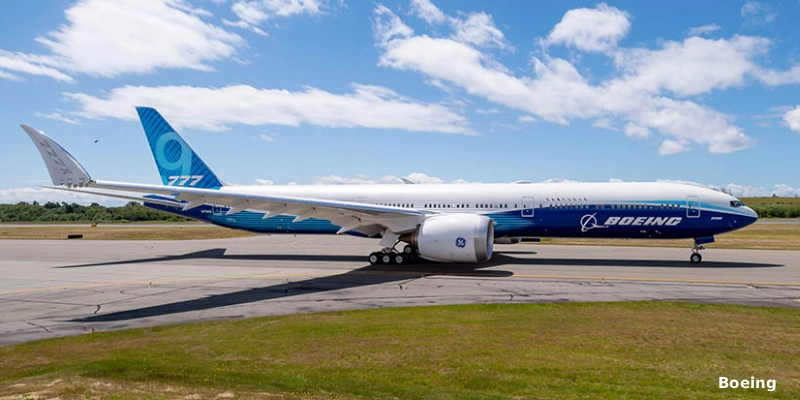Boeing Chief Executive Kelly Ortberg acknowledged on Thursday that certification of the 777-9, the company’s new wide-body aircraft, is behind schedule. The manufacturer expects to deliver the first 777X unit in 2026, six years later than initially planned when the program was launched in 2013.
Speaking at the Morgan Stanley Laguna conference, Ortberg admitted there is still a “mountain of work” ahead to achieve approval, though he clarified that no new technical issues have been identified. However, he noted that even a slight adjustment to the 777’s schedule has a significant financial impact, after the company accumulated losses amounting to several billion dollars on this project.
Inflation and Cost Pressure
The executive highlighted that inflation across the entire supply chain is directly affecting aircraft prices. Despite this, he stated he does not foresee logistical obstacles that would hinder the goal of increasing 737 MAX production to 42 units per month before the end of the year, surpassing the current regulatory limit of 38 aircraft.
Ortberg cautioned that Boeing must still reduce the amount of rework required on the 737 program before accelerating manufacturing. “One month won’t make a difference in the grand scheme, but losing stability will,” he stated, emphasizing that rushed production increases in previous years disrupted the production system and supply chains, leading to multi-billion dollar losses and tensions with customers and suppliers.
→ Boeing Accelerates Deliveries in August: 57 Aircraft
Progress on 737 MAX 7 and MAX 10
The manufacturer has progressed with the necessary design modifications to certify the 737 MAX 7 and MAX 10 models, the smallest and largest versions of the family. Nevertheless, Ortberg was critical of the time the process has taken. Increasing 737 production is key for Boeing to return to positive cash flow, although the company will not make a misstep: it will only increase the pace when it is fully ready.
787 Production on the Rise
Boeing has also increased production of the 787 Dreamliner, moving from five to seven units per month. The plan is to reach eight aircraft shortly, with the expectation of achieving 10 per month by 2026.
Debt Reduction as a Priority
Another key point for the company’s financial future is paying down the debt accumulated during the multiple crises of recent years. Ortberg emphasized that settling these obligations will be a top priority once Boeing returns to profitability.
Aircraft as a Tool for International Trade
In parallel, Ortberg recalled that the Donald Trump administration pressured strategic economic partners to purchase Boeing aircraft as part of efforts to rebalance U.S. trade relationships. Japan, South Korea, and other countries have closed orders for dozens of aircraft under these agreements. “There’s no better way to correct the trade balance than by buying a large number of airplanes,” he concluded, while acknowledging that many of these announcements also respond to the high pent-up demand for new aircraft.
With information from Reuters.
Related Topics
Philippine Airlines Receives Its First Airbus A350-1000
American Airlines Debuts Airbus A321XLR on Transcontinental Route Between New York and Los Angeles
Uzbekistan’s Qanot Sharq Receives Its First Airbus A321XLR
China Airlines Orders Five Additional Airbus A350-1000 Jets
Plataforma Informativa de Aviación Comercial con 13 años de trayectoria.
